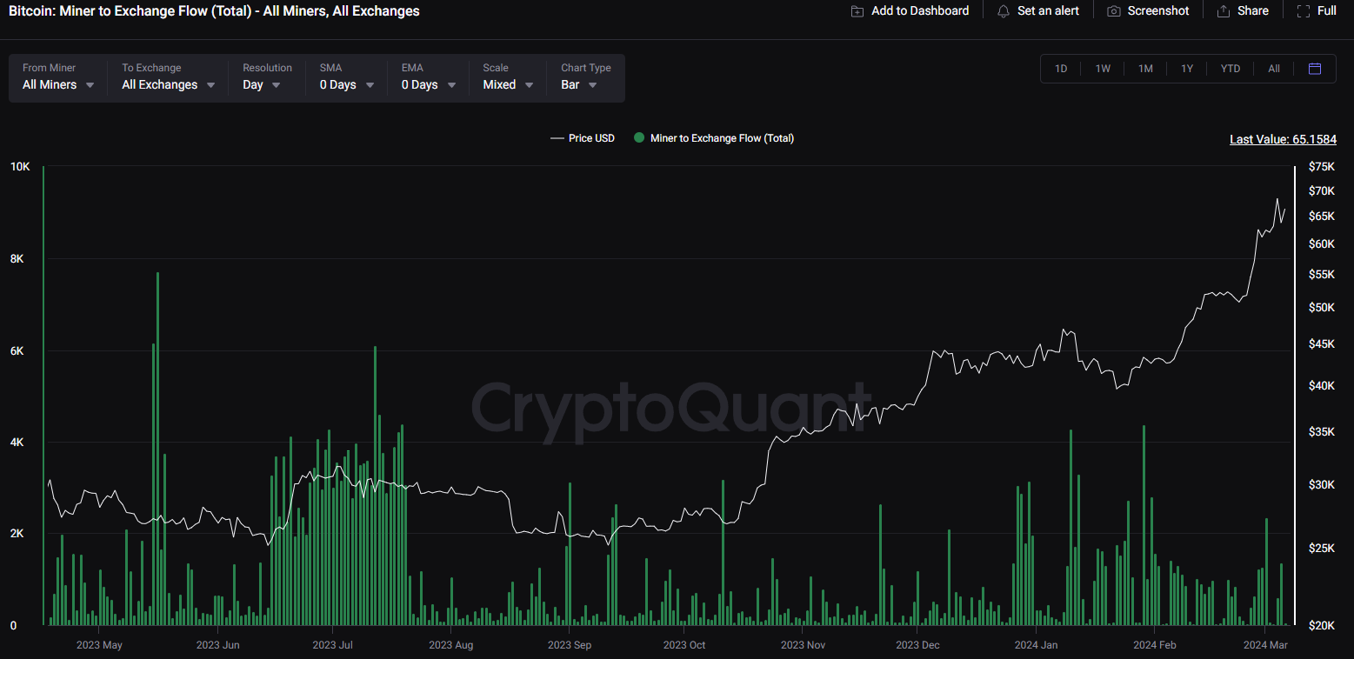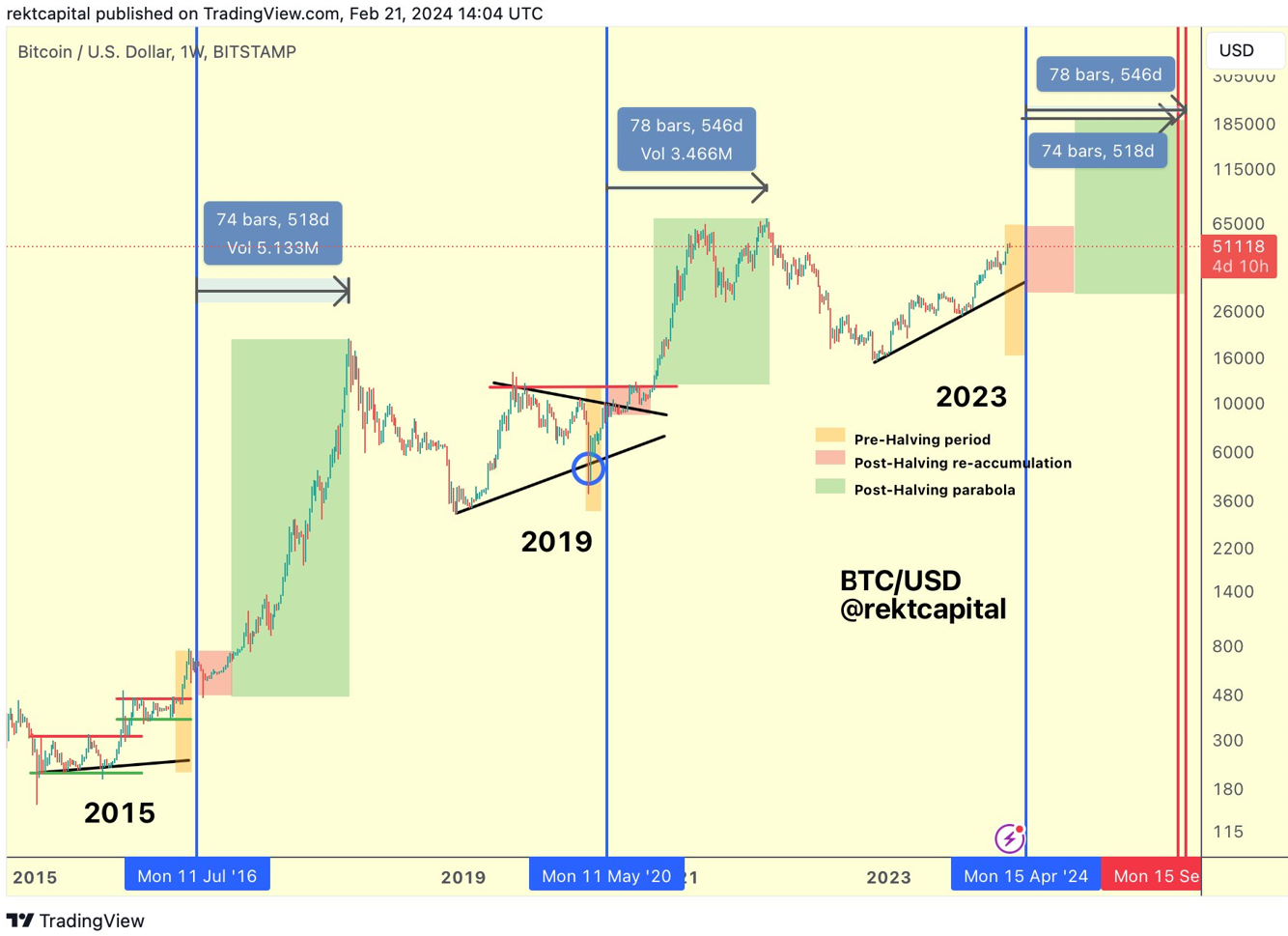On Tuesday, Bitcoin price broke the previous all-time high of $69,060, with its Fear & Greed index showing the “Extreme Greed” score of 90, last time seen in 2021. It was followed by a cold shower, BTC dropping 14% in several hours and triggering the liquidations of almost $900 million of leveraged long positions (data: Coinglass).
This overnight pullback may have scared some, but it also normalized the funding rates in the perpetual futures markets, making them saner and putting the overall market in a better position for the upcoming halving and more price action to come. Indeed, high funding rates, such as those seen lately, indicate an excessive optimism, characteristic of Bitcoin’s local market tops. Yesterday’s peak was just one step in Bitcoin price’s journey to the top of the current cycle, and we will certainly witness many more.
However, dramatic drops are likely to occur often too. Yesterday’s correction gave an interesting glance into the new reality of the Bitcoin market – a reality marked by thin liquidity, where every significant buy or sell risks impacting the price disproportionally.
Let’s look at the details of the drop, before taking a step back and looking at the current Bitcoin’s 4-year cycle and when can we expect it to peak.
Why did Bitcoin price drop?
The drop is likely due to miners selling their coins. On-chain analytics firm CryptoQuant shared data showing BTC flows from miners’ accounts to exchanges, and a large transfer of 1,358 BTC just before the price plunge could be responsible for it.

However, when looking at the longer timeframe, such transfer seems to be all but normal, with miners regularly transferring even larger amounts of BTC to exchanges. Of course, as Bitcoin price rises, these bitcoins have an increasingly bigger impact on the market, but yesterday’s drop appears rather outsized.
CryptoQuant explained that by insufficient liquidity on Coinbase, where the coins were transferred. "Considering that the exchange order book shows 5-10 bitcoins of liquidity for every $100 price change, a sell-off of 1,000 bitcoins is highly likely to trigger a significant price drop," the company’s analyst told Coindesk.
If such situations become the new normal, we are in for a true rollercoaster, which will impact the next phases of the Bitcoin cycle.
Bitcoin bull market peak: what to expect
Due to its in-built 4-year halving schedule, Bitcoin price action is cyclical. Every 4 years, it repeats approximately the same routine: around 3 years of growth with a halving event somewhere in the middle, followed by one year of decline. However, as Bitcoin’s popularity grows, each cycle repeats at ever higher levels.
The current cycle started in January 2023, when Bitcoin price bottomed out of $16,500 to reach $42,800 a year later. With the halving scheduled for April 15th, we should have approximately one month of pre-halving rally ahead of us, which should be followed by a short period of accumulation and correction, before starting the post-halving rally, historically one of the most impressive periods in Bitcoin’s cycle.
This schedule was well illustrated by crypto analyst Rekt Capital in their X post.

According to this graph, the next bull market peak may occur 518-549 days after the halving, or somewhere from mid-September to mid-October 2025. The price pinnacle is certainly everyone’s guess, but Bitcoin bulls used to place it around $150,000, or, in the case of Rekt Capital, over $185,000.
Historically, each new cycle is much higher than the previous, although the multiplier is decreasing. The peak of 2017 ($19,680) was 17 times higher than the one of 2013 ($1,155), and the peak of 2021 ($69,060) was 3.5 times higher than the one of 2017. This is understandable, taking into account that Bitcoin started at $0 just 15 years ago. If the bulls’ predictions come true, it would mean a 2.2 nominal increase in the new cycle. Considering inflation, this multiplier could be even lower (e.g. even to reach an inflation-adjusted all-time high, BTC would have to clear the $78,600 level).
However, this cycle differs from the previous ones by the arrival of traditional finance, which operates on an entirely other scale. Together with the liquidity shortage, it could move Bitcoin markets in ways we haven’t yet experienced, making all the above estimations useless. In the meantime, traders are bracing for a volatile period ahead.
Written by D.Center



















